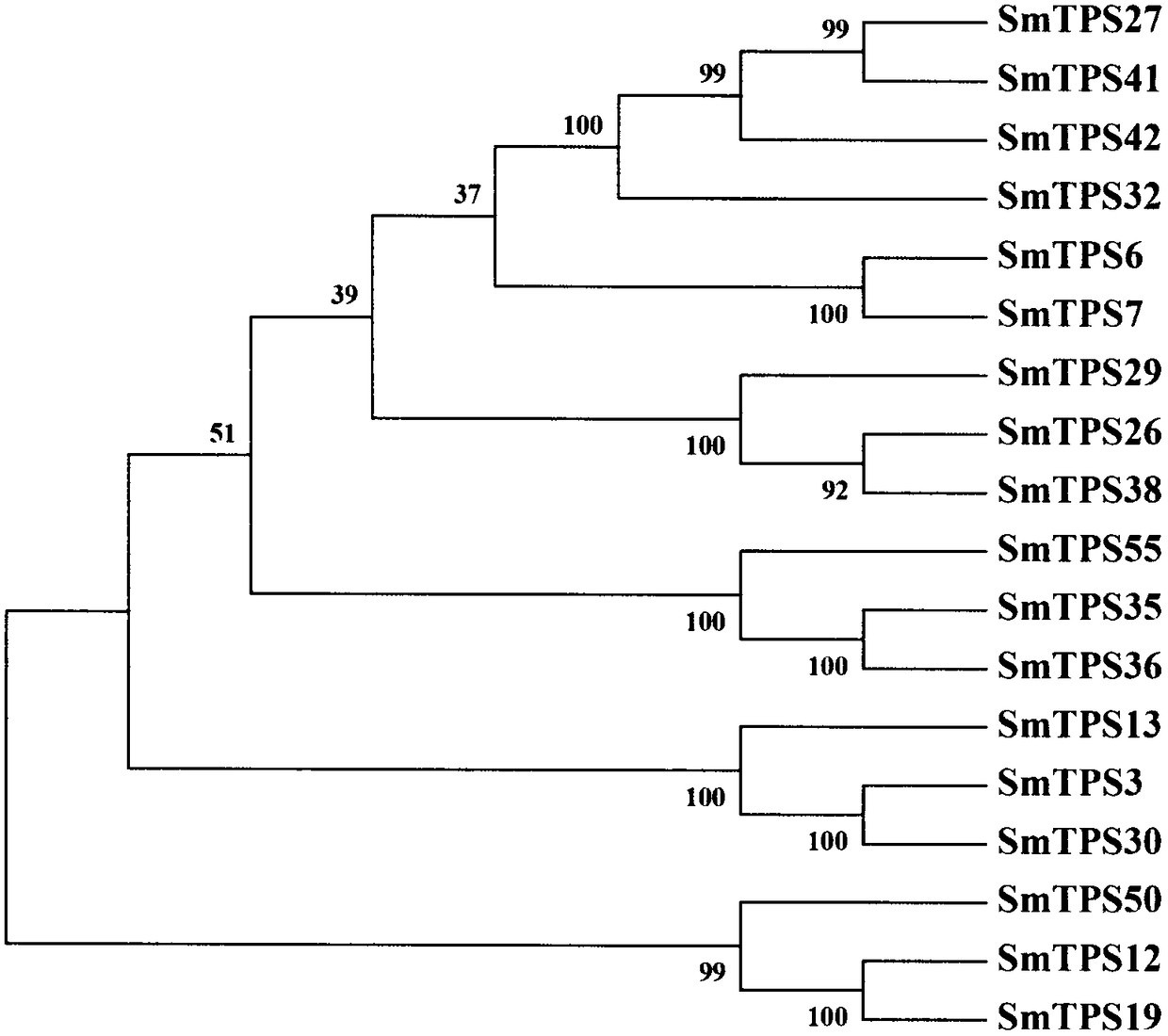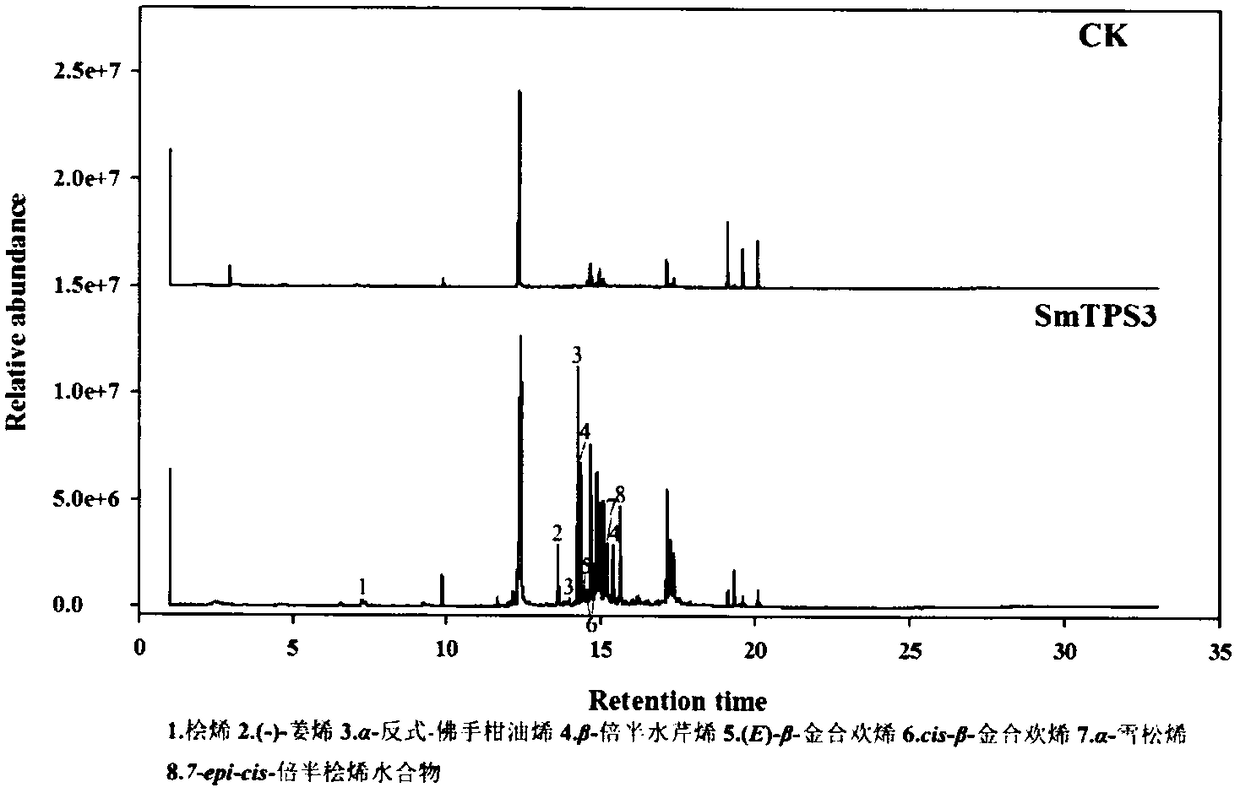Method used for synthesizing plurality of sesquiterpenoid compounds using salviae miltiorrhizae SmTPS3 gene
A sesquiterpene and compound technology, applied in the field of identification and functional verification, terpenoid synthase gene cloning, can solve the problem of unresolved volatile substances
- Summary
- Abstract
- Description
- Claims
- Application Information
AI Technical Summary
Problems solved by technology
Method used
Image
Examples
Embodiment 1
[0017] Example 1 Cloning and structural analysis of SmTPS3 gene
[0018] 1) Using RT-qPCR technology to predict the differential expression of SmTPS3 gene in different tissues and organs of Salvia miltiorrhiza. The results are presented in the form of a histogram, such as figure 2 Shown. It can be found that SmTPS3 is highly expressed in the stems of Salvia miltiorrhiza.
[0019] 2) Design primers based on the SmTPS3 sequence, and use Salvia miltiorrhiza cDNA as a template for amplification to obtain a nucleotide sequence of 1614 bp in length, such as SEQ ID No. 1. The amino acid sequence of Salvia miltiorrhiza SmTPS3 was obtained after translation according to the full-length cDNA sequence, as SEQ ID No.2.
Embodiment 2
[0020] Example 2 Construction of Prokaryotic Expression System of SmTPS3 Gene and Detection of Metabolites
[0021] 1) Select BamH I / Xho I as the restriction site, perform restriction digestion and ligation reaction on SmTPS3 and pET28a vector to construct the heterologous expression vector pET28a-SmTPS3 of the gene.
[0022] 2) Transform pET28a empty vector and pET28a-SmTPS3 into competent cells BL21 (DE3) respectively, and spread them on LB solid medium plates containing 50 mg / L Kana (kanamycin) to select positive clones. Single colonies of positive clones were selected to be inoculated into LB liquid medium containing corresponding antibiotics (50 mg / L Kana) and cultured overnight. On the next day, transfer and expand the culture at a ratio of 1:50. When the OD600 of the bacterial solution reaches between 0.4-0.6, add 0.5mM IPTG, in a shaker at 25℃, avoid light to induce protein expression for 20h, rotating speed Set to 110r / min.
[0023] 3) Take 10mL of the induced bacterial so...
PUM
 Login to View More
Login to View More Abstract
Description
Claims
Application Information
 Login to View More
Login to View More - R&D
- Intellectual Property
- Life Sciences
- Materials
- Tech Scout
- Unparalleled Data Quality
- Higher Quality Content
- 60% Fewer Hallucinations
Browse by: Latest US Patents, China's latest patents, Technical Efficacy Thesaurus, Application Domain, Technology Topic, Popular Technical Reports.
© 2025 PatSnap. All rights reserved.Legal|Privacy policy|Modern Slavery Act Transparency Statement|Sitemap|About US| Contact US: help@patsnap.com



